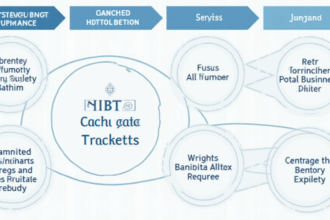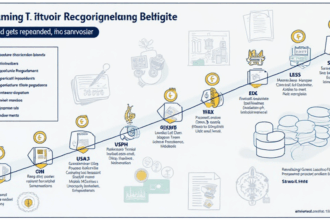Introduction
In 2024, the global cryptocurrency ecosystem reached an astonishing $1.8 trillion market capitalization, yet it is accompanied by controversies surrounding energy consumption. With Bitcoin mining consuming around 129 Terawatt-hours annually, the sustainable future of digital currencies has come into sharp focus.
We find ourselves at a crossroads, where Bitcoin blockchain energy policies are paramount. The task ahead is balancing innovation with environmental responsibility, a challenge not just for developers but for regulators and consumers alike. In this article, we’ll dissect the existing energy policies of Bitcoin and analyze their implications on the crypto landscape, highlighting solutions and efforts aimed at forging a sustainable digital economy that respects our planet.
The Energy Demand of Bitcoin: A Double-Edged Sword
Bitcoin has been labeled as an energy guzzler, with some critics claiming it is a principal driver of carbon emissions. The question then arises: is Bitcoin’s energy use a necessary evil or an opportunity for innovation? Let’s break it down.

Understanding Bitcoin Mining Energy Consumption
Bitcoin mining involves solving complex cryptographic puzzles, a process that requires substantial computational power and thus, significant energy. According to the Cambridge Centre for Alternative Finance, Bitcoin’s energy consumption is equivalent to that of the Netherlands. This substantial demand results from the Proof of Work (PoW) consensus mechanism that is foundational to Bitcoin’s security and integrity.
Environmental Impact and Criticism
The environmental impact of Bitcoin has attracted criticism from stakeholders across governments, NGOs, and the general public. The reliance on fossil fuels for mining operations in various regions exacerbates climate change concerns. For instance, data shows that 39% of Bitcoin mining operations are powered by non-renewable resources. This stark reality highlights the urgent need for improved energy policies in the Bitcoin blockchain space.
Current Bitcoin Blockchain Energy Policies
Countries around the globe are beginning to implement various energy policies aimed at regulating the electricity consumption of cryptocurrency miners. Let’s delve into these policies:
China’s Crackdown on Mining
In 2021, China enforced a crackdown on cryptocurrency mining in an effort to meet its carbon neutrality commitment by 2060. They aimed to reduce energy-intensive operations, pushing miners to relocate to regions with greener energy options.
North America’s Shift Towards Renewable Energy
Many miners have since turned to North America, particularly the U.S. and Canada, where renewable energy sources constitute a larger percentage of the electricity grid. The Bitcoin Mining Council claims that over 56% of the energy consumed in Bitcoin mining comes from renewable sources in these regions.
Policies in Vietnam: A Growing Market
Vietnam is seeing a surge in cryptocurrency adoption, with a growth rate of approximately 120% in cryptocurrency use from 2020 to 2024. The government is beginning to pay attention to sustainability in the looming regulations over blockchain technologies, as encapsulated in their emerging energy policies. Local initiatives focus on integrating renewable energy in mining operations, with discussions on standards such as tiêu chuẩn an ninh blockchain spreading across the industry.
Future Solutions: Fostering Sustainability in Bitcoin Mining
To mitigate the environmental impact of Bitcoin mining and to enhance the credibility of the entire cryptocurrency ecosystem, innovative solutions must be adopted.
Adoption of Proof of Stake Mechanisms
Transitioning from Proof of Work to Proof of Stake could drastically reduce energy consumption, but it remains an area of contentious debate regarding security and decentralization. Various projects, like Ethereum, are proving that lower energy consumption is achievable while still validating transactions securely.
Carbon Offset Initiatives
Many Bitcoin mining companies are exploring carbon offset initiatives to balance their energy footprints. This includes partnering with organizations to invest in reforestation or renewable energy projects to negate their carbon emissions effectively.
Investment in Green Technology
Investing in greener technology is a viable way forward. Several miners are now harnessing waste energy from flaring, utilizing excess energy from renewable sources such as wind and solar farms, and implementing energy-efficient strategies in their operations.
The Importance of Educating Stakeholders
To navigate the complexities of Bitcoin blockchain energy policies, education plays a crucial role. Stakeholders, including miners, investors, and consumers must be aware of the implications of energy consumption. Resources and guidelines addressing sustainable practices can help the industry transition towards a greener future.
Moreover, governments can foster collaboration between public and private sectors, leading to a unified strategy focusing on sustainable energy use in cryptocurrency.
Conclusion
As we embark on a journey towards a sustainable cryptocurrency future, it is imperative to heed the challenges Bitcoin faces regarding energy consumption. Effective energy policies are essential in paving the way for cryptocurrency to thrive while being environmentally responsible.
Through innovative solutions, global collaboration, and educational initiatives, the Bitcoin blockchain can emerge as a beacon of sustainability and adaptability in the ever-evolving digital landscape.
For those exploring this space and looking to invest wisely while considering environmental impacts, you can rely on platforms like bitcryptodeposit to stay informed and engage with sustainable investment practices.







